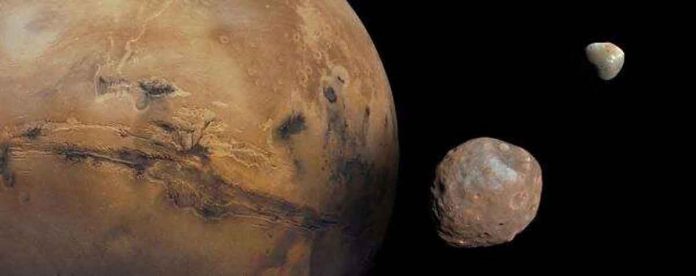Mining asteroids for resources such as iron, precious metals, water, or other valuable species may become profitable in the future. Mining will most likely begin with near-Earth objects (NEOs), which are asteroids whose orbits cross the Earth. Mining, on the other hand, will want to access the Main Belt of asteroids that orbit between Mars and Jupiter in the long run.
Although NEOs are much closer to us, profitable mining requires more than just balancing the cost of travel. The Main Belt asteroids have 10,000 times the resources of NEOs. Furthermore, any asteroid mining operation must consider the cost of the rendezvous—which slows the spacecraft once it arrives—as well as the cost of shipping the ore back to a processing facility.
The cost (and weight) of the fuel required to rendezvous is one of the most important parameters to consider in the feasibility calculation. It is mostly determined by the parameter “delta-V,” which is a measure of the kinematic requirement of performing a spacecraft maneuver and is usually expressed in kilometers per second. A rendezvous with an especially advantageous NEO from a low-Earth orbit spacecraft involves a delta-V of about four kilometers per second.
Unfortunately, reaching asteroids in the Main Belt requires a delta-V of approximately seven kilometers per second. While this may not appear to be a significant difference, the fuel requirements for maneuvers are exponentially dependent on delta-V, with even minor changes having a significant impact, making Main Belt asteroids energetically difficult to reach from Earth.
CfA astronomers Martin Elvis, Jonathan McDowell, and former Harvard undergraduate Anthony Taylor demonstrated that Main Belt asteroid mining could be made more profitable by deploying spacecraft from a station in an orbit similar to that of the Martian moon Phobos, which orbits about 6,000 kilometers from Mars’ surface and offers a lower delta-V to Main Belt asteroids. Mars provides some additional orbital benefits because, unlike the Earth, whose orbit is nearly circular, Mars’ orbital eccentricity and inclination provide a lower delta-V path to the asteroids.
The authors propose two-burn and three-burn scenarios (referring to the number of rocket ignitions required) to achieve a rendezvous in their study published in Planetary and Space Science, and they develop a computer code to calculate the energetics for known asteroid orbital classes. The findings indicate that the costs of exploration could be significantly reduced.
Many other factors influence whether or not a mission is financially viable, but the authors show that the concept of launching and then returning to an operations center in a Phobos-like orbit, or even on Phobos itself, is relatively convenient and advantageous. They go on to say that profitable large-scale mining from Mars orbit could lead to regular access to the Martian surface.

